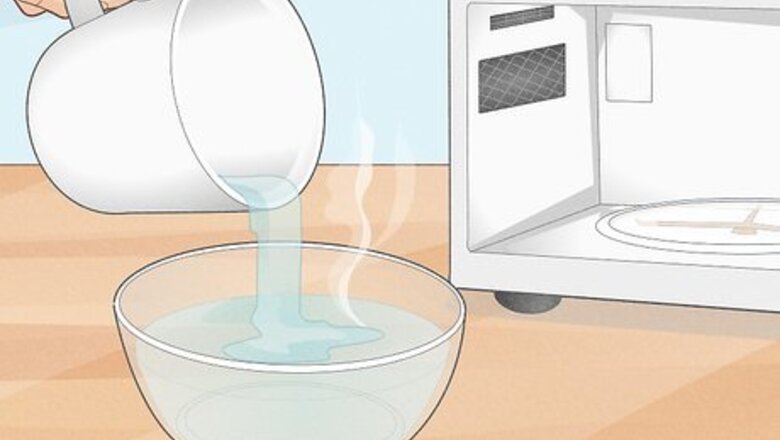
views
Connecting the Fittings
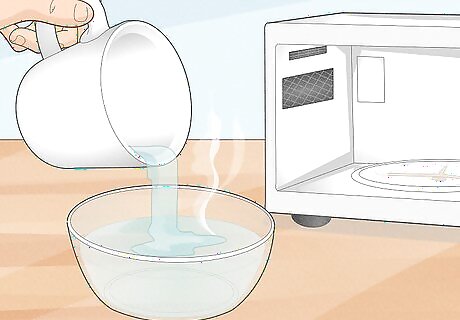
Fill a cup with hot water. Pour hot water into the cup straight from a faucet or heat up some water in the microwave or on the stove, but not until it’s boiling. Be careful not to burn yourself while you’re doing this. If you have a microwaveable mug, fill it up with water as if you’re going to make tea and microwave it using the beverage setting on a microwave to warm it up to a good temperature.
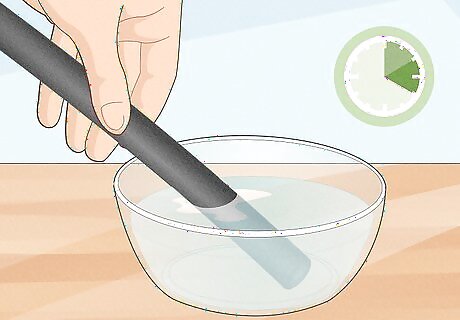
Stick the end of the tubing into the hot water for 10-20 seconds. This warms the tubing up so it expands and makes it easier to push the fitting in. Once the tubing cools down again, it will contract around the fitting for a nice tight seal. You might have to experiment with the exact amount of time you leave the end of the tubing in the hot water. Depending on the temperature of the water and the thickness and composition of your tubing it may take longer than 10-20 seconds.
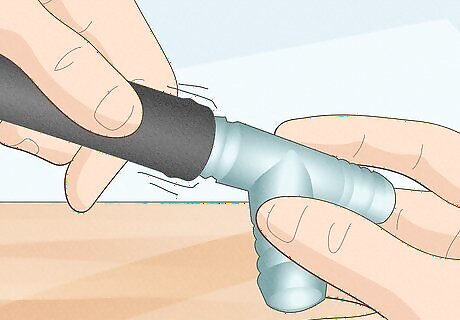
Push the fitting into the tubing by wiggling it into place. Stick the tip of the barbed fitting into the open end of the tubing that you just heated up. Wiggle the fitting using back and forth and up and down motions, while simultaneously pushing hard, until it’s all the way inside the tubing. Avoid twisting the fitting into place. This can cause your tubing to kink while you’re forcing the fitting in. Check to make sure that the edge of the tubing is right up against the stop point on the barbed fitting. If you see a gap, keep wiggling and pushing the fitting in further.
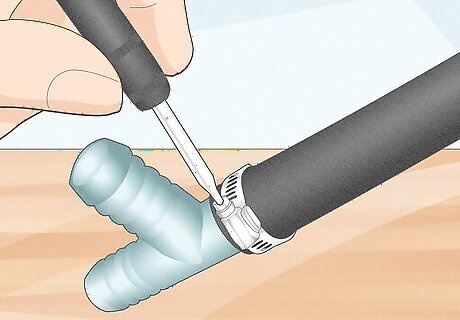
Slide the hose clamp over the tubing and tighten it with a screwdriver. Slip the ring over the end of the fitting until it’s sitting on the end of the tubing, about in the middle of where the barbs are inside of the tubing. Hold the ring in place and use a screwdriver to turn the fastening screw clockwise until it’s as tight as you can get it. Don’t try to tighten the hose clamp by hand. You won’t be able to get a tight enough seal. EXPERT TIP Greg Jeiranyan Greg Jeiranyan Licensed Plumber Greg Jeiranyan is a Licensed Plumber based in Los Angeles, California. With over 10 years of professional experience, Greg and his team specialize in residential and commercial plumbing service calls. His company, Plumbing Geeks, is rated 5 stars on Yelp and is a family-owned and operated plumbing company. Plumbing Geeks has been serving Los Angeles and its surrounding areas since 2021. Greg Jeiranyan Greg Jeiranyan Licensed Plumber Insert and clamp poly pipe onto barbed fittings for tight connections. To connect poly pipe to a barbed fitting, fully insert the pipe onto the fitting and clamp it. This makes a tight, leak-proof connection. The threaded side then easily connects to poly pipe. This versatile method securely connects water, gas and more with simple effectiveness.
Choosing Tubing and Fittings
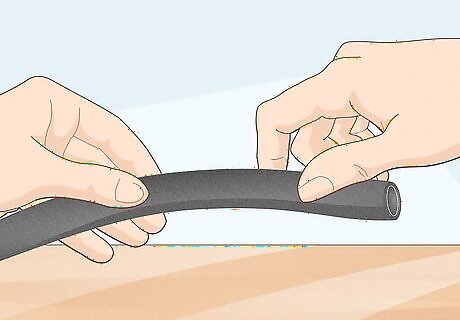
Ensure that your tubing is made of a flexible rubber or plastic material. Barbed fittings are only meant to work with soft, flexible tubing. Don’t attempt to use them with any hard, rigid tubing. Examples of compatible flexible materials are polyurethane, silicone, nylon, and PVC. Flexible tubing that carries liquids, such as in beverage dispensers or irrigation systems, is typically connected using barbed fittings.
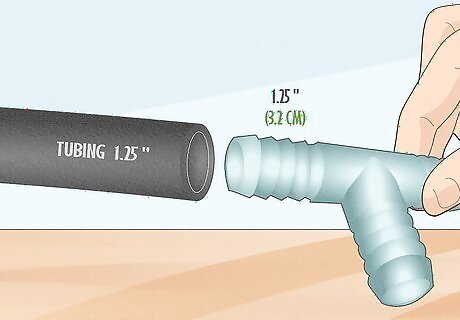
Choose a barbed fitting that matches the inside diameter of your tubing. Look at the printed numbers on the sides of your tubing for the inside diameter, or “ID.” Use a barbed fitting with a diameter that matches the ID of your tubing exactly, or it won’t fit properly. For example, if the internal diameter of your tubing is 1.25 in (3.2 cm), use a barbed fitting with a diameter of 1.25 in (3.2 cm). If you can’t find the ID of your tubing printed on the sides, use a ruler or tape measure to measure across the mouth of the tubing from one inside wall to the other.
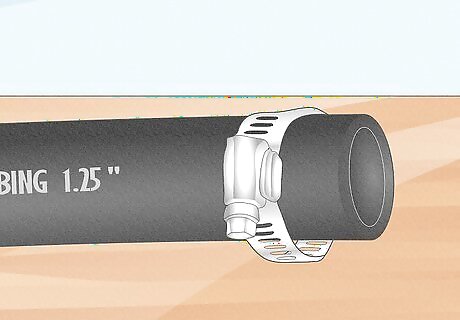
Get a stainless steel hose clamp that’s wider than the tubing. Check the printed numbers on your tubing for the outside diameter, or “OD.” Pick a hose clamp that is close to matching the size of the outside diameter, but at least ⁄8 in (0.32 cm) bigger, so it fits over the tubing. Stainless steel hose clamps are the best choice for most flexible tubing applications because they won’t corrode due to moisture.




















Comments
0 comment